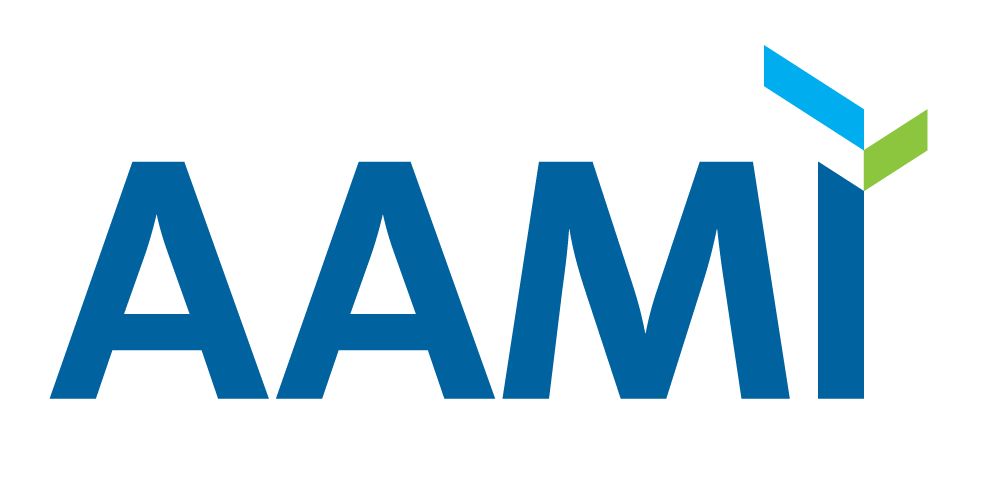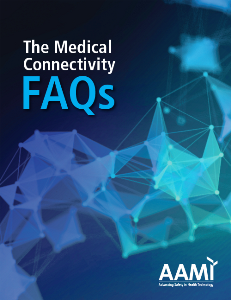References
1. Lewis BD, Davis PT. Wireless Networks for Dummies. Hoboken, NJ: Wiley Publishing, 2004.
2. Coleman DD, Westcott DA. Certified Wireless Network Administrator Study Guide, 5th Ed. Indianapolis, IN: John Wiley & Sons, 2018.
3. Wireless LAN Professionals. WLW 023—Learning Wireless LAN Technologies. www.wlanpros.com/resources/wlw-023-learning-wireless-lan-technologies/. Accessed Oct. 17, 2019.
4. Amateur Radio Relay League. www.arrl.org/shop. Accessed Oct. 17, 2019.
5. Zavrel RJ. Antenna Physics: An Introduction. Newington, CT: American Relay Radio League, 2016.
6. Nichols EP. Propagation and Radio Science. Newington, CT: American Relay Radio League, 2015.
7. AAMI. HTM Resources Page. www.aami.org/membershipcommunity/content.aspx?ItemNumber=3186&navItemNumber=787. Accessed Nov. 19, 2019.
8. AAMI. Going Wireless. Arlington, VA: Association for the Advancement of Medical Instrumentation, 2013. Accessed Oct 13, 2020.
9. Hallas J. Basic Radio: Understanding the Key Building Blocks. Newington, CT: The American Radio Relay League, 2005.
10. Hudson J, Luecke J. Basic Communications Electronics. Lincolnwood, IL: Master Publishing, 1999.
11. National Instruments. RF and Communications Fundamentals. Accessed Oct. 13, 2020.
12. Stoehr MD. RF Basics. Accessed Oct. 13, 2020.
13. Bluetooth Special Interest Group. Bluetooth Technology: Topology Options. Accessed Oct. 13, 2020.
14. Revolution Wi-Fi. Accessed Oct. 13, 2020.
15. wirednot. Accessed Oct. 13, 2020.
16. Wireless LAN Professionals. Accessed Oct. 13, 2020.
17. Jajszczyk A, Ed. A Guide to the Wireless Engineering Body of Knowledge. Hoboken, NJ: John Wiley & Sons, 2012.
18. Spectrum analyzer. en.wikipedia.org. Accessed Oct. 13, 2020.
19. Packet analyzer. en.wikipedia.org. Accessed Oct. 13, 2020.
20. Wireless site survey. en.wikipedia.org. Accessed Oct. 13, 2020.
21. Wireless Medical Telemetry Service. en.wikipedia.org. Accessed Oct. 13, 2020.
22. Federal Communications Commission. Medical Device Radiocommunications Service (MedRadio). Accessed Oct. 13, 2020.
23. FCC 11-176. Report and Order. Accessed Oct. 13, 2020.
24. McGee MK. XP Device Support Ends: Now What? Medical Device Expert Suggests Windows XP Security Strategy, interview with Kevin Fu. Accessed Oct. 13, 2020.
25. AAMI. Health IT Risk Management: A Practical Tool to Help Hospitals and Medical Devices Stay Secure in a Complex World. Accessed Oct. 13, 2020.
26. Baker SD. Application of IEC 80001 in Avoiding Pitfalls of Wireless LAN System Design. Accessed Oct. 13, 2020.
27. Raymond P, Baker SD. Risks, Challenges and Opportunities of Wireless Technologies in Healthcare: Wireless Testing in a Hospital. Presentation at: AAMI Wireless Workshop; October 4–5, 2012; Herndon, VA. Accessed October 13, 2020.
28. Department of Health and Human Services, Healthcare & Public Health Sector Coordinating Councils. Health Industry Cybersecurity Practices: Managing Threats and Protecting Patients. Accessed Oct. 13, 2020.
29. Healthcare and Public Health Sector Coordinating Council Joint Cybersecurity Working Group. Medical Device and Health IT Joint Security Plan. Accessed Oct. 13, 2020.
30. National Institute of Standards and Technology. Framework for Improving Critical Infrastructure Cybersecurity. Accessed Oct. 13, 2020.
31. Grimes SL, Wirth A. Medical Device Cybersecurity: A Guide for HTM Professionals. Arlington, VA: Association for the Advancement of Medical Instrumentation, 2018.
32. Microsoft TechNet. Myth vs. reality: Wireless SSIDs. https://blogs.technet.microsoft.com/steriley/2007/10/16/myth-vs-reality-wireless-ssids/. Accessed Oct. 18, 2019.
33. National Electrical Manufacturers Association. ANSI/NEMA HN 1-2019 Manufacturer Disclosure Statement for Medical Device Security. Accessed Oct. 13, 2020.
34. Baker SD, Hoglund DD. Medical-Grade, Mission-Critical Wireless Networks. IEEE Eng Med Biol Mag. 2008;27(2):86–95.
35. ANSI/AAMI/IEC TIR80001-2-3:2011. Application of risk management for IT-networks incorporating medical devices—Part 2-3: Guidance for wireless networks. Arlington: VA: Association for the Advancement of Medical Instrumentation.
36. IEEE. IEEE GET Program—GET 802(R) Standards. Accessed Oct. 13, 2020.
37. IEEE 802.11. https://en.wikipedia.org. Accessed Oct. 13, 2020.
38. List of WLAN Channels. https://en.wikipedia.org/wiki/List_of_WLAN_channels#5_GHz_(802.11a/h/j/n/ac/ax). Accessed Oct. 21, 2019.
39. Aruba Networks. Appendix D: Dynamic Frequency Selection Operation. Accessed Oct. 13, 2020.
40. Federal Communications Commission. FCC Establishes New Wireless Medical Telemetry Service. Accessed Oct. 13, 2020.
41. FCC 00-211. Report and Order Accessed Oct. 13, 2020.
42. Lewis PH. HDTV: Not heart-stopping, but a bit too close. The New York Times. Mar. 12,
1998:G9. www.nytimes.com/1998/03/12/technology/hdtv-not-heart-stopping-but-a-bit-tooclose.
html. Accessed Oct. 21, 2019.
43. Federal Communications Commission. Licensing. Accessed Oct. 13, 2020.
44. Sherman P, Campbell C. Assessing Existing Telemetry Systems for Risk of Electromagnetic Interference. Journal of Clinical Engineering. 2001;26(2):144–154.
45. Padgette J, Bahr J, Batra M, et al. Guide to Bluetooth Security. May 2017.Accessed Oct. 13, 2020.
46. FCC 15-47. Report and Order and Second Further Notice of Proposed Rulemaking. Accessed Oct. 13, 2020.
47. Network Working Group. Extensible Authentication Protocol (EAP) Proposed Standard Request for Comments. RFC 3748. Accessed Oct. 13, 2020.
48. Network Working Group. Extensible Authentication Protocol (EAP) Key Management Framework Proposed Standard Request for Comments. RFC 5247. Accessed Oct. 13, 2020.
49. Network Working Group. The EAP-TLS Authentication Protocol Proposed Standard Request for Comments. RFC 5216. Accessed Oct. 13, 2020.

